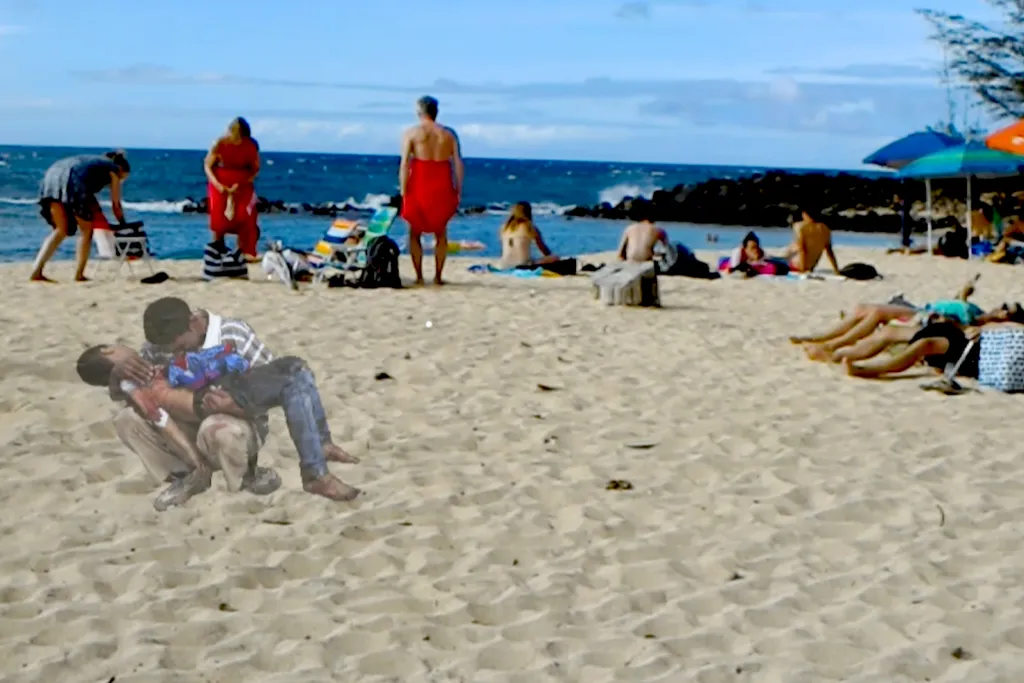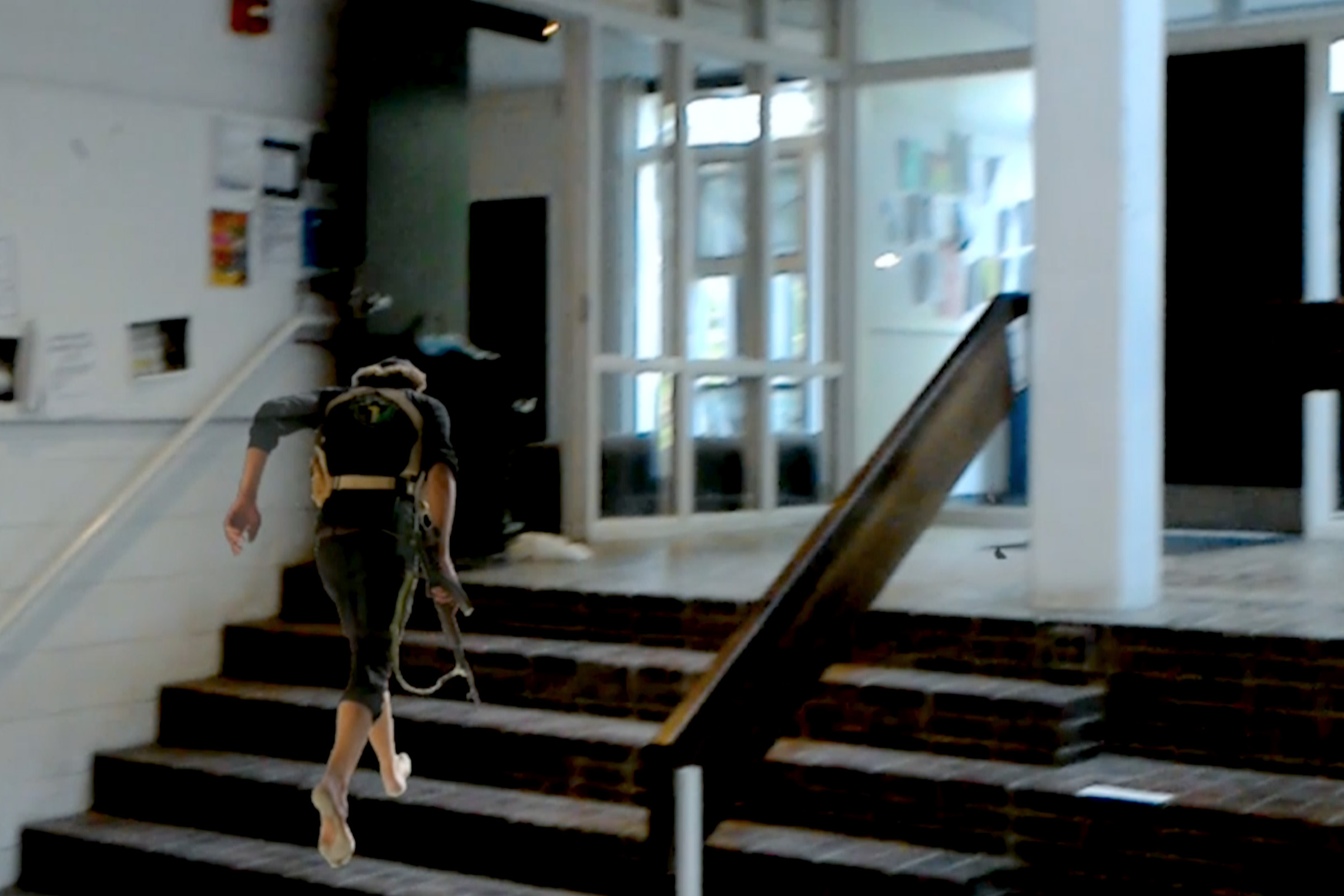For many of us, the world’s problems are all too easy to forget, especially when we’re far removed from tragic disasters and global conflicts. We simply put it to the backs of our minds and continue about our day.
But what if you couldn’t escape those horrors? What if they populated the world around you, just as frequently as the billboards for soft drinks and posters for blockbusters? What if mixed reality technology simply wouldn’t let you escape into your own world? It doesn’t sound very comfortable, does it?
Asad Malik isn’t interested in making you comfortable. Under his artist name of 1RIC, he’s using HoloLens to burst the comfy bubbles we sometimes immerse ourselves in when out in the real world. The team calls this project Holograms From Syria, and it’s got some powerful ideas behind it.
When I got back from school on a particularly warm Spring day in 2011, the TV told me that Osama Bin Ladin had been killed 5 minutes away from the hospital I was born in. I was raised in Pakistan, a country where the impact of the post 9/11 war on terror were felt in everyday life. The images of violence that frequented our television screens were from the same cities and towns we populated.
Since I’ve moved to the US, the images of war have followed. Cat videos, Trump memes, mutilated dead bodies in Syria, beautifully designed mattress ads one after the other on a scrolling newsfeed. The country is at war but something’s fundamentally different; there is no war. At least not here. No drones in the sky, no fear of public spaces, no reason to hide. Here the war is merely in rising defense stock and a series of images on a 4 inch screen. A simulation for a country stuck between the bomb & the supermarket.
FIND OUT MORE – https://1ric.com/syria
Posted by 1RIC on Thursday, 22 June 2017
“At the height of the Vietnam war, artist Martha Rosler put forward a body of work titled “House Beautiful: Bringing the war home”,” 1RIC tells me over email. “It was a series of collages that brought together images from the war in Vietnam and images of beautifully designed American homes. It was a response to her “frustration with the images we saw in television and print media, even with anti-war flyers and posters. The images we saw were always very far away, in a place we couldn’t imagine.” So she brought them to spaces in America through these chilling image collages that now have iconic status in the art world.”
Imagine that same concept translated into MR, then. As you walk down your school hallway you might spot a Syrian soldier charging up the stairs, brandishing a weapon. Your office might have a pile of bodies slumped in one corner, or a crying child might huddle next to your leg as you ride an elevator. It doesn’t sound pleasant in the least bit, but it makes the sad truth of the larger world around us an inescapable constant instead of something that’s easy to turn a blind eye to.
1RIC himself was born and raised in Pakistan. In fact, he was born just five minutes from where al-Qaeda founder Osama bin Laden was assassinated on May 2nd 2011. His daily life was fuelled with constant reminders of the war around him, but that changed when he moved to the US. Though America warred with al-Qaeda, the distance between the two made the States a very different place to be.
“So I took a clue from Rosler and used the technology that will define the next decade to create a very different type of art piece: one that takes images from the war in Syria and literally places them in your space through the Hololens.”
The result is this art installation that lifts images from harrowing war photography. “I wanted people living in the US to see the direct relationship of the lives they lead with the lives that are affected by the wars their country is involved in,” 1RIC explains. “The couch in their living room is socially, politically and economically connected to someone else’s dead body lying washed up on a beach.”
Unlike most MR experiences that are designed to amaze and delight, Holograms From Syria is deliberate in its upsetting nature. Interestingly, 1RIC sees it having a different reaction between those that oppose the war and those at don’t. “I’ve only been able to install the project in very liberal places in the US so far and have had generally positive reactions,” he says. “I would not be surprised by negative reactions as more diverse people discover it online.”
Bringing is online is crucial, as Holograms currently exists in a very controlled environment. Beyond this initial concept, he’d like to give HoloLens owners the option to have these holograms injected into their everyday useage as a bitter reminder of the world’s struggles.
“I would be interested in a situation where users can express a desire to experience realities and perspectives different than their own but sometimes not have the choice over what realities they’re exposed to,” 1RIC says. “This should, of course, happen with appropriate content warnings. It’s important that real people and real wars do not continue to become even more of a game or a simulation as MR devices become common.”
Truth be told I’m not sure I would opt into something like Holograms From Syria myself, at least full time. Being exposed to these horrors 24/7 sounds like an overwhelming experience, but that’s the exact reason projects like this need to exist.































